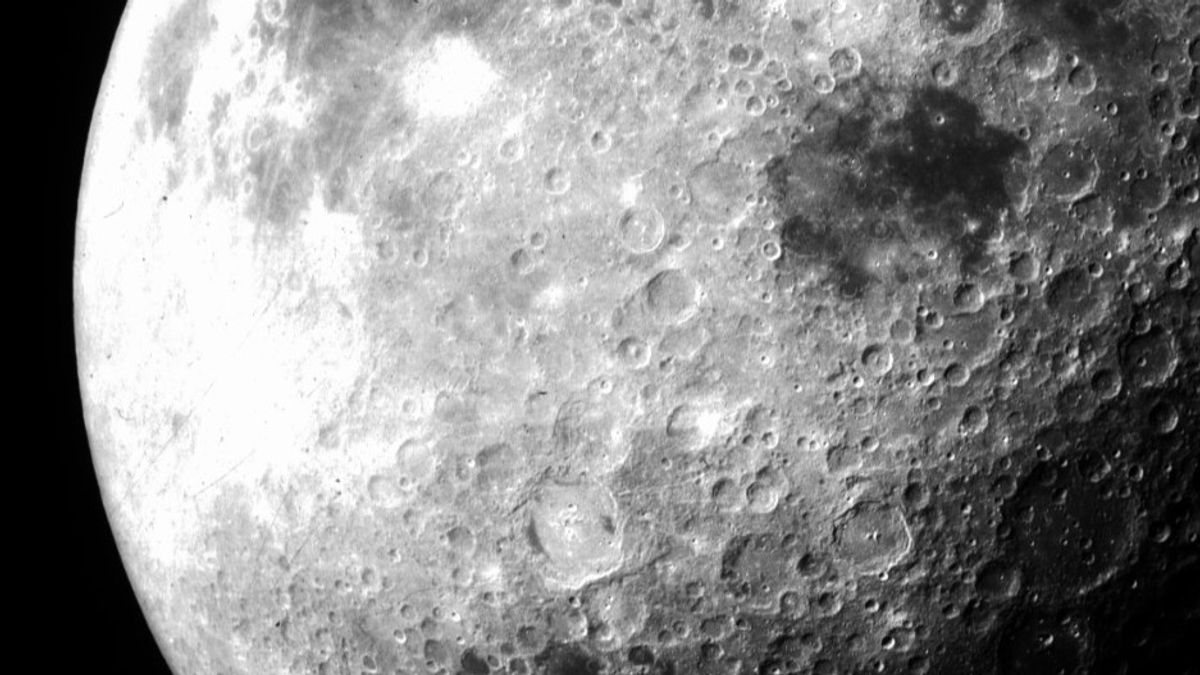
JAKARTA – On July 20, 1969, the United States space agency (NASA) succeeded in landing the first man on the moon, Neil Armstrong and his partner Buzz Aldrin. NASA did manage to land humans, but at that time it was not known whether there was a location on the moon that could be occupied by humans.
The moon is a natural satellite of the Earth which is often the object of research by scientists. In addition, scientists are also examining whether the moon has a goldilock or not, which is a habitable area.
Given the temperature on the moon is very extreme, where certain areas of the moon experience heat up to 260 degrees Celsius during the day. Meanwhile, at night, the moon's temperature drops drastically to minus 173 degrees Celsius.
Scientists have found the hottest temperature on the Moon along with the findings of about 200 holes that become the goldilock zone and are claimed to be close to the average temperature in San Francisco.
According to the analysis of scientists, the 200 holes on the moon have an average temperature of 17 degrees Celsius. That means, the location is perfect for being a human shelter from the extreme temperatures of the moon's surface.
The holes are also said to be able to protect astronauts from a number of celestial hazards such as the solar wind, micrometeorites, and cosmic rays.
The researchers revealed that a number of these holes lead to caves with warm temperatures. These partially shady holes and dark caverns could be ideal for lunar bases, scientists say.
"Surviving on a lunar night is very difficult because it requires a lot of energy, but being in these holes and caves almost completely eliminates that requirement," said Tyler Horvath, a doctoral student in planetary science at the University of California, Los Angeles and lead author on the funded study. NASA published online July 8 in the journal Geophysical Research Letters, to Live Science on July 31, 2022.
The SELENE (SELenological and ENGineering Explorer) orbiter operated by the Japan Aerospace Exploration Agency (JAXA) discovered the first hole on the lunar surface in 2009. The Diviner Lunar Radiometer Experiment thermal camera on the NASA Lunar Reconnaissance Orbiter (LRO) robot was used for this new study.
Two to three of the 200 holes found have recesses leading into the cave. As many as 16 of them appear to be "ceilings" of collapsed lava tubes.
On Earth, lava tubes are hollow caverns found near the surface in volcanic areas. The two sites are in Tenerife in the Canary Islands and Kazumura Cave in Hawaii Volcanoes National Park. The researchers further explained the formation of these hollow holes.
The holes on the Moon are not too far from the landing sites of NASA's two Apollo missions. The distance between the Tranquillitatis hole and the Apollo 11 and Apollo 17 landing sites is actually the same, about 375 km.
The study was originally intended to provide preliminary guidance for a mission proposed by NASA's Jet Propulsion Laboratory for 2020 and will send explorers to the Tranquillitatis hole to investigate a possible cavern.
To better understand the early history and evolution of the moon, Horvath suggested that this rover would be able to examine the LRO-imaged lava flow layers on the walls of the hole.
"From orbit, there's not much to learn about these holes, but if we travel to one directly, there's a lot to learn," Horvath said, as summarized from LiveScience.
The English, Chinese, Japanese, Arabic, and French versions are automatically generated by the AI. So there may still be inaccuracies in translating, please always see Indonesian as our main language. (system supported by DigitalSiber.id)











